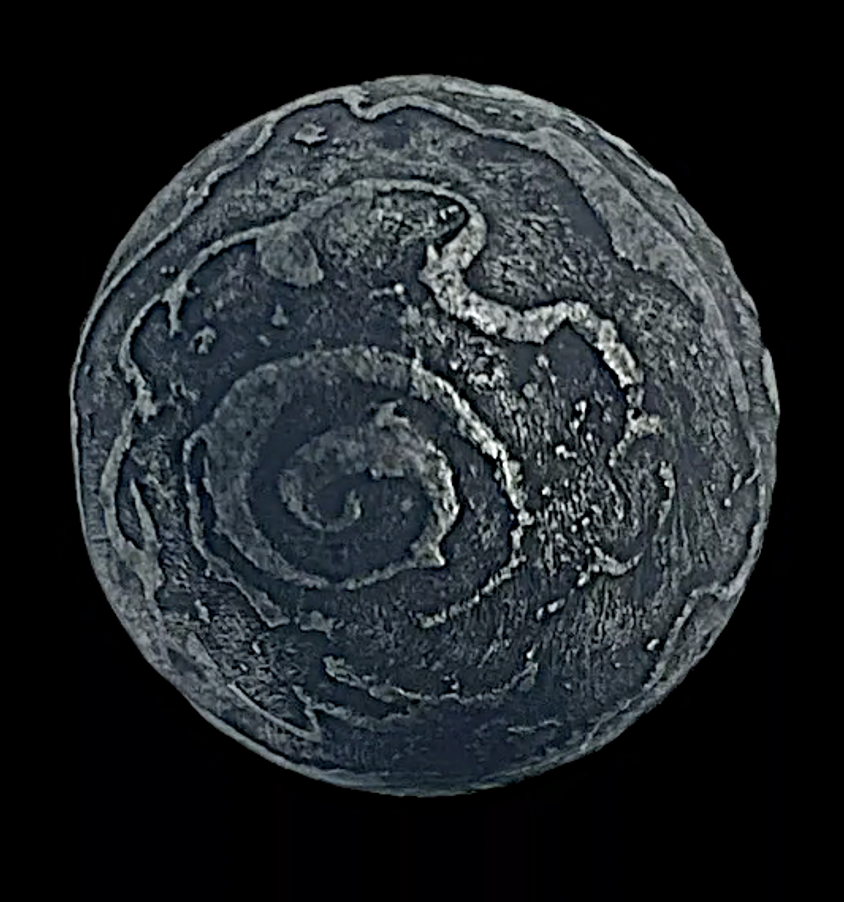

Title: Antique Eastern Ancient Asian Bronze Money Exchange Sculptures
Shipping: $29.00
Artist: N/A
Period: Antiquity
History: Art
Origin: Central Asia > China
Condition: Good
Item Date: N/A
Item ID: 1301
Antique Eastern Asian Bronze Bullet Money Lot – Rare Currency Art Sculptures This set of two antique bronze balls is a rare example of currency sculpture art from Eastern Asia. Each piece showcases intricate details and a unique design, making them a captivating addition to any collector's assortment. Crafted from bronze, the balls display a patinated gray color that enhances their antique charm. Their distinctive appearance makes them ideal for inclusion in a Middle Eastern or Asian antiques collection. These pieces are not only historically significant but also visually striking, with a tactile quality that invites admiration. They would make an elegant display, especially when arranged in a decorative bowl. Larger ball weight: 110 grams Smaller ball weight: 57 grams A must-have for enthusiasts of antique currency and Asian art, these rare bronze balls are a testament to the beauty and history of Eastern craftsmanship. The history of ancient metal balls as a form of Asian currency reflects the ingenuity and cultural practices of early trade systems. These metal balls, often crafted from bronze, silver, or other metals, served as a practical and durable medium of exchange in regions where traditional coinage had yet to develop or was less accessible. Their unique shapes and weights were standardized to facilitate trade and ensure fair transactions, embodying both functionality and artistry. The use of metal balls as currency also highlights the resourcefulness of ancient societies in adapting available materials to meet economic needs, playing a significant role in the evolution of commerce and money exchange in Asian history.
The history of design in Asian currency reflects the region's rich cultural, artistic, and economic evolution. From ancient times, Asian societies employed diverse materials, such as shells, metal ingots, and coins, as mediums of exchange. The design of these currencies often incorporated intricate patterns, symbolic motifs, and inscriptions that conveyed cultural values, religious beliefs, and political authority. For instance, early Chinese coinage featured square holes for stringing coins together, a design both practical and symbolic of balance and unity. Asian currencies also adapted to the rise and fall of empires, with each dynasty or kingdom introducing distinct designs that highlighted their power and influence. The use of precious metals such as gold and silver further underscored the intrinsic value of these currencies. In some regions, artistic elements like calligraphy, animal figures, and religious iconography adorned coins and notes, serving as cultural identifiers and reinforcing national pride. As trade expanded, the design of currency in Asia became a medium for intercultural exchange, blending influences from neighboring civilizations. Today, the legacy of Asian currency design is a testament to the region's innovative spirit, showcasing how artistry and functionality were seamlessly intertwined to meet the economic and cultural needs of diverse societies.